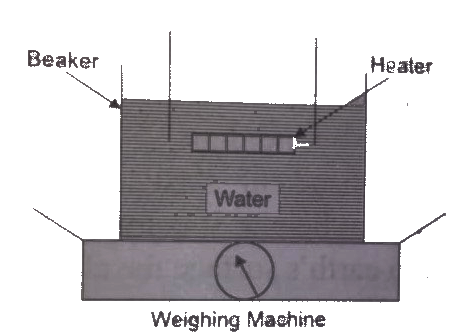The white of an egg, common salt, sugar and fine sand are added to water separately in beakers as shown below. The mixture is stirred well. A suspension will be formed in the beaker

I
II
III
IV
The correct Answer is:D
Step by step video, text & image solution for The white of an egg, common salt, sugar and fine sand are added to water separately in beakers as shown below. The mixture is stirred well. A suspension will be formed in the beaker by Chemistry experts to help you in doubts & scoring excellent marks in Class 9 exams.
Topper's Solved these Questions
- BOOK - LAKHMIR SINGH & MANJIT KAURCHAPTER - STRUCTURE OF ATOMEXERCISE - Very Short Answer1videos
STRUCTURE OF ATOM
- BOOK - LAKHMIR SINGH & MANJIT KAURCHAPTER - STRUCTURE OF ATOMEXERCISE - NCERT Book, Page 501videos
STRUCTURE OF ATOM
- BOOK - LAKHMIR SINGH & MANJIT KAURCHAPTER - STRUCTURE OF ATOMEXERCISE - Value Based Questions17videos
STRUCTURE OF ATOM
- BOOK - LAKHMIR SINGH & MANJIT KAURCHAPTER - MODEL TEST PAPER 5EXERCISE - Section B2videos
MODEL TEST PAPER 5
Similar Questions
Knowledge Check
- Question 1 - Select One
Four students took separately the mixture of sand, common salt and ammonium cloride in beakers, added water, stirred the mixture well and then filtered. They reported their observations as shown below

Who reported the observations in the correct order of the components as residue and in the filtrate ?AIBIVCIIIDII - Question 2 - Select One
If you are given a mixture of sand and salt and water. You can separate these by the process of
Aonly decantationBonly filtrationConly evaporationDusing all of the above - Question 3 - Select One
Separation of sawdust from water can be carried out by the following steps given below. Arrange them in a proper sequence.
(1) The mixture is poured gently into the filter cone and collected in another beaker which is called filtrate. (2)A mixture of sawdust and water is taken in a beaker. (3) A filter paper is folded in the form of a cone and fitted into a funnel by moistening it with a few drops of Water. (4) Solid retained on the filter paper is called residue.A3,1,2,4B1,2,3,4C3,4,2,1D2,3,1,4
Prachi took 50 mL of water in two beakers at room temperature and added sodium chloride to one beaker while sugar to the other, till no more solute would dissolve. Then she heated the contents of the beakers and added more solutes in them.
(a) Will the amount of salt and sugar that can be dissolved in water at given temperature same ?
(b) What will you expect to happen if she cools the contents of the beakers ? Justify your answer.View SolutionYou are provided with a mixture of salt, sand, oil and water. Write the steps involved for the separation of salt, sand and oil from the mixture.
View SolutionYou are provided with a mixture of salt, sand, oil and water. Write the steps involved for the separation of salt, sand and oil from the mixture.
View SolutionAs part of an experiment to determine the latent heat of vaporisation of water, a student boils some water in a beaker using an electric heater as shown below. The student notes two sources of error.

Error-1: thermal energy is lost from the sides of the beaker
Error -2: As the water is boling water splashes out of the beaker
Which of the following gives the correct effect of these two errors on the calculated value for the specific lalent heat?View SolutionSeparation of sawdust from water, can be carried out by the following steps given below. Arrange them in a proper sequence.
(a) The mixture is poured gently in to the filter cone and collected into another beaker which is called filtrate.
(b) A mixture of saw dust and water is taken in a beaker
(c ) A filter paper is folded in the form of a cone and fitted into a funnel by moistening it with few drops of water
(d) solid retained on the filter paper is called residue.View Solution

